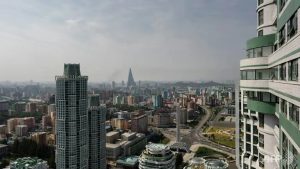
Construction in North Korea turned positive last year, Seoul said, as did the agriculture, forestry and fishing sector
SEOUL: North Korea’s sanctions-hit economy defied the impact of international restrictions to grow for the first time in three years in 2019, the South’s central bank said Friday (Jul 31).
Nuclear-armed Pyongyang is highly secretive and refuses to publish growth statistics of its own, leaving outsiders reliant on estimates drawn up from other sources.
In Seoul, the Bank of Korea (BOK) said the North’s gross domestic product rose by 0.4 per cent in 2019, after shrinking by 4.1 per cent the previous year.
The 2018 figure represented the second consecutive contraction in the face of increasingly tough international sanctions over its banned weapons programmes.
But construction turned positive last year, the BOK said in a statement, as did the agriculture, forestry and fishing sector, while contraction in mining and manufacturing narrowed.
The North is banned from exporting coal, iron and lead under UN Security Council measures imposed in 2017, and their sales slumped in the following year, setting a low comparative base for the latest figures.
Trade in textiles, once a key export, is banned in both directions.
Nonetheless total exports rose by 14.4 per cent to US$280 million in 2019, according to the BOK, with the biggest increases in clocks and watches, along with footwear, hats and wigs.
Under leader Kim Jong Un the North has repeatedly promised to raise living standards and has quietly sought to liberalise its long-moribund economy to allow market forces to play a greater role.
But it has not proclaimed widespread reforms, insisting that it is following the ideological path of Kim’s grandfather, the North’s founder Kim Il Sung and his son and successor Kim Jong Il.
It remains deeply impoverished, with around 40 per cent of the population in need of food aid according to UN estimates.
The BOK said the North’s economy was less than one-fiftieth of the size of the South’s, which ranks 12 in the world.
And the North’s gross national income per capita stood at about 1.4 million won (about US$1,200) it added – while the South’s was more than 26 times higher.

